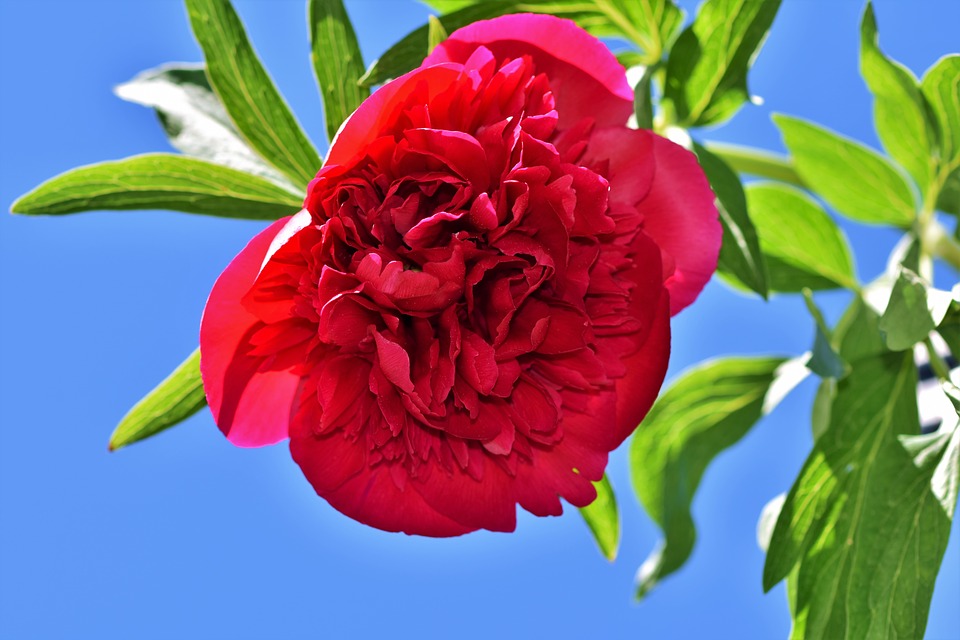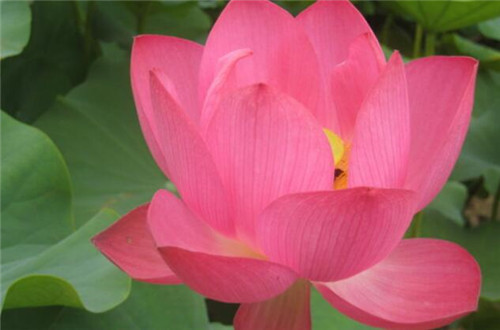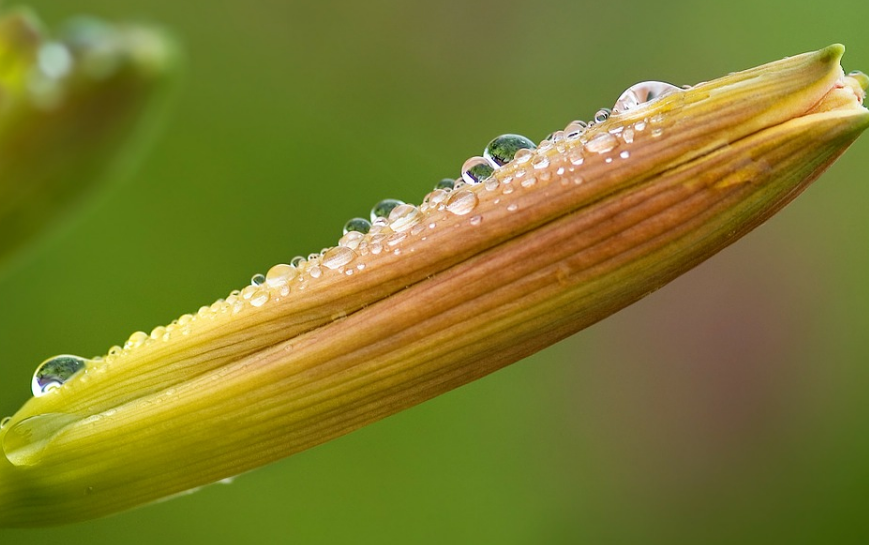Do you know how to prevent and control these diseases and insect pests that flowers are the easiest to get?
The flowers we cultivate today, whether they are flowers or plants, are introduced into artificial cultivation from the wild state. Under the long-term manual and careful management, the resistance of flowers and plants has gradually decreased, from not afraid of the wind and rain, the habit of eating and sleeping, and become "ice muscle and jade bone, weak and vulnerable". Therefore, it is very easy to lead to the invasion of diseases and insect pests. So what are the most common diseases and insect pests that flowers can get? How to prevent and cure it?

I. the most easily available common diseases and their control methods
1. Cold in late spring
This is a non-infectious disease, which mainly occurs in some areas south of the Yangtze River and between the Yangtze and Huaihe Rivers. by the end of March, the daytime temperature has reached more than 20 ℃. Many people are eager to move their potted ornamental plants outside for conditioning and maintenance. At this time, there is often cold air to the south, there is a "late spring cold" reverse weather, and the lowest temperature in the early morning often drops below 4 ℃, resulting in the "freezing" of new shoots and leaves of some tropical flowers.
Common such as Magnolia, Milan, jasmine, gentleman orchid, Dai powder leaf, fruit taro, inverted golden bell, bamboo taro, Anthurium andraeanum, poinsettia, etc., will seriously affect the normal growth of that spring.
Prevention and control methods: timely grasp the weather forecast of local meteorological stations, encounter the special weather of "late spring cold", for a small number of potted plants that have moved outdoors, they can be moved back to the greenhouse or indoor; if more potted plants are moved outdoors, it can be gathered together and covered with double-layer plastic film. In the Yangtze River basin and its northern areas, it is generally necessary to wait until after the Qingming Festival or the end of the "final frost period" before moving outdoors. The doors and windows can be cooled down by opening doors and windows and installing electric fans, and the doors and windows will be closed at night. Make it have a process of gradually adapting to the outdoor environment.
2. Powdery mildew
It mainly harms the ornamental plants such as rose, crape myrtle, ten meritorious works, big leaf yellow poplar, bamboo Polygonum and so on. It mainly harms leaves, petioles, pedicels, flower buds and tender shoots, and the damaged parts are covered with a layer of white powder. In severe cases, the leaves turn yellow, the tender leaves curl, wrinkle and thicken, the buds die, deformed flowers appear, and the tender shoots are bent and shortened.
Prevention and treatment methods: sulfur powder fumigation in March in the greenhouse in the use of electric fumigator, built-in sulfur powder, sealed fumigation, has a good control effect.
3. Anthrax
It mainly harms camellia, tea plum, Yemeni iron, eight immortal flowers, gentleman orchids, evergreen, orchids, spider eggs, epiphyllum, rubber trees, cyclamen and so on. It mainly harms leaves, tender shoots and fruits, and the disease spot is nearly round and grayish brown. In the later stage, the disease spot turns gray-white, with obvious concentric patterns and small black spots.
Prevention and control methods: the density of the whole pot flowers and the planting plants and row spacing in the ground to improve the ventilation and ventilation conditions. The pot soil should be properly watered when it is dry to increase the resistance of the plant. In the early stage of the disease, use 80% anthrax Fumi wettable powder 500 times, or more than 50%? Sulfur suspending agent 800 times liquid, spray alternately, once every 10 days, continuous 2 times for 3 times.
4. Grey mold
With the recovery of gas, excessive humidity and poor ventilation, Botrytis cinerea is still one of the main diseases of indoor flowers. It is harmful to African chrysanthemum, rubber tree, melon and leaf chrysanthemum, cyclamen, poinsettia, geranium, Rieger begonia, green apple, dragon boat flower, mulberry, Anthurium andraeanum and other potted flowers, especially leaves and petals.
Prevention and control methods: after 3 months, it is necessary to strengthen ventilation and light transmission, reduce indoor air humidity, prohibit spraying water to the foliar surface in the evening, and prevent moisture from remaining on the foliar surface for a long time.
For the plants in the early stage of the disease, 65% of Dysen zinc wettable powder or 50% carbendazim 1000 times of wettable powder can be sprayed alternately every 10 days for 2 consecutive times.
5. Coal pollution disease
In March, due to poor indoor ventilation and high humidity, scale insects, aphids, whiteflies and other prickly mouthparts pests could not be completely eliminated. Coal fouling disease still occurs on the leaf flowers and fruits of citrus, Milan, Fusang, Magnolia, Michelia, fishtail sunflower, banyan, camellia, palm bamboo, rhododendron, gardenia, bone holly, Fujian tea and other plants.
Prevention and control methods: strengthen indoor ventilation and kill the insect vectors of coal fouling disease caused by aphids, scale insects and whitefly in time. A small number of leaves on individual plants are infected with coal fouling disease, so the coal dirt layer can be scrubbed with wet cloth with low concentration of washing powder water. At the initial stage of the disease, the branches and leaves of infected plants can be sprayed with 50% methyl sulfur suspension 500 times or 75% chlorothalonil wettable powder 500 times, once every 15 days for 2 consecutive times.
Second, the most easily available common insect pests and their control methods
1. Pink beetle
Scale insects are small and are white fluffy parasites that directly invade the plant's vascular bundle system to absorb plant juice. they are usually hidden in or around leaf axils, and can often be found under the leaves. Some pink beetles even hide in the roots of plants.
In addition, pink beetles usually lay eggs in their hideouts (an area that looks like white cotton).
Control methods: should maintain a ventilated environment, ventilation is not good environment, plants are easy to get scale insects. Scale insects are difficult to get rid of. At the initial stage of infection, they can be removed manually, erased with alcohol or vinegar, and then washed with water. In serious cases, you can spray wet "Jiebizhi" to kill insects, spray once a week, and take medicine three times in a row to destroy them.
2. Tenebrionidae
Whitefly is a more common pest. They look like mini white moths and can fly. Whitefly (especially larvae) usually hide on the back of the leaf, and its adults choose to lay eggs on the back of the leaf.
Prevention and control methods: the ventilation of the plant environment should be improved as far as possible to avoid too dense plants and too much humidity in the basin soil. At the initial stage of the occurrence of insect pests, the infected parts can be removed and the whole plant can be sprayed with acetamiprid diluent. When the pest is serious, you can place an armyworm board on the edge of the plant, shake the branches, stick the insects, and spray acetamiprid diluent.
3. Aphids
Aphids usually like to focus on attacking new leaves, buds or buds.
Prevention and control methods:
After finding aphids, you can directly spray Huasen to kill insects. Adult aphids like yellow, and you can use yellow sticky plates or water traps to kill them. Pay attention to improving the environment, keep good ventilation and pay attention to light.
4. Scale insects
Scale insects are small, flattened, brown and hard-shelled insects that like to cling to stems hidden under leaves.
Control methods: scale insects can be removed manually with toothpicks at the initial stage, and "Jiebizhi" can be sprayed once. In severe cases, Jiebizhi should be sprayed once a week for 3 times in a row. The ventilation of the plant should be paid attention to at ordinary times.
5. Red spider
Red spider is a common pest when small spots are found in the banded area under the leaves and between the stems and leaves of the plant. It's probably infected with a red spider.
Prevention and control methods: at the initial stage, the pest can be cut off and burned, with chemical control, there should be two or three kinds of chemical rotation. It is recommended that the suitable medicament can effectively kill the larvae and adults of red spiders. It can also be cut into thin strips or small pieces with citrus peel, add about 10 times the amount of water, soak for more than 4 hours, spray the whole plant, can effectively control.
6. Blackie Fei
Xiao Hei Fei is a very annoying bug, it is very small, black has transparent wings. They like to crawl on the soil, and their eggs and larvae are hidden in the soil.
Prevention and treatment: keeping the basin soil dry can effectively prevent Xiao Hei from flying. When Xiaohei Fei is found, he can directly dilute the root with the flower protector and irrigate the root. The soil is thoroughly watered and sprayed on the whole plant.
7. Thrips
The body is tiny and slender, with white, light yellow, brown, dark brown or black in the naked eye, and likes to live in hidden places, such as under the villi on the back of the leaves, in the flower organ or in the calyx.
Prevention and treatment: 1500 times of dichlorvos emulsion can be sprayed to kill (pay attention to spray to the back of the leaf).
Time: 2019-03-14 Click:
- Prev

How to plant "goddess in the water" water lilies? It only takes three steps to get it done easily!
Water lily is a kind of perennial aquatic herb. Because it blossoms beautifully, it is as beautiful as an ice muscle girl, so it has the title of goddess in the water. Many people want to plant it very much for this, but they don't know how to plant it and are afraid of trouble. So how to plant water lilies?
- Next

How many cauliflower seedlings? What is the planting time and method? What if there are diseases and insect pests?
Cauliflower, also known as golden needles, brain-strengthening vegetables, forgettable grass, etc., is a perennial perennial root herb of the lily family, which is cultivated all over the north and south of our country, so how many seedlings of cauliflower? What is the planting time and method? What if there are diseases and insect pests? How many cauliflower seedlings?
Related
- Fuxing push coffee new agricultural production and marketing class: lack of small-scale processing plants
- Jujube rice field leisure farm deep ploughing Yilan for five years to create a space for organic food and play
- Nongyu Farm-A trial of organic papaya for brave women with advanced technology
- Four points for attention in the prevention and control of diseases and insect pests of edible fungi
- How to add nutrient solution to Edible Fungi
- Is there any good way to control edible fungus mites?
- Open Inoculation Technology of Edible Fungi
- Is there any clever way to use fertilizer for edible fungus in winter?
- What agents are used to kill the pathogens of edible fungi in the mushroom shed?
- Rapid drying of Edible Fungi

